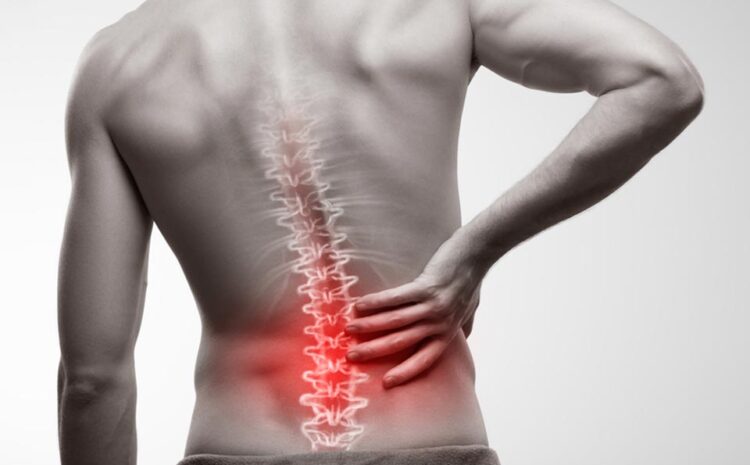aking care of your back while lifting is crucial for preventing pain and injuries. Many orthopaedic patients struggle with pain due to improper lifting techniques. Safe lifting practices play a key role in Back Pain Management, especially if you want to avoid worsening existing issues or developing new problems. In this article, we’ll cover easy and practical tips for lifting safely, ensuring that your back stays protected.
Why Safe Lifting Matters
When you lift incorrectly, it places unnecessary strain on your back muscles, discs, and spine. Over time, this can lead to back pain or serious injuries, such as herniated discs or muscle tears. Adopting proper techniques helps you:
- Prevent injuries by minimizing strain.
- Reduce existing back pain through better posture.
- Maintain spinal health and overall mobility.
Key Principles of Safe Lifting
Here are some fundamental principles to follow when lifting:
| Principle | What It Means | Why It Helps |
|---|---|---|
| Use Your Legs, Not Your Back | Bend at your knees and hips, not your waist. | Transfers weight to stronger leg muscles. |
| Keep the Load Close | Hold the object close to your body. | Reduces strain on your back. |
| Avoid Twisting | Turn your whole body instead of twisting your spine. | Prevents spinal injuries and muscle strain. |
| Lift Slowly | Lift in a controlled manner, without jerking motions. | Prevents sudden strain on muscles and joints. |
Steps for Safe Lifting
Follow these step-by-step instructions for lifting safely:
1. Plan Before You Lift
- Check the weight of the object to ensure it’s manageable.
- Clear the path to avoid tripping hazards.
- If the object is too heavy, ask for help or use tools like a dolly.
2. Position Yourself Properly
- Stand close to the object with your feet shoulder-width apart.
- Bend your knees, keeping your back straight.
3. Lift the Object
- Hold the object securely with both hands.
- Push through your heels and straighten your legs.
- Keep the object close to your chest.
4. Move Safely
- Walk slowly and avoid sudden movements.
- Turn your entire body when changing direction.
5. Set the Object Down Correctly
- Bend your knees again and lower the object slowly.
- Avoid dropping or tossing the object.
Common Mistakes to Avoid
Many people unknowingly make mistakes while lifting. Here are some to watch out for:
| Mistake | What Happens | How to Avoid It |
|---|---|---|
| Bending at the Waist | Strains lower back muscles and spine. | Always bend your knees, not your waist. |
| Twisting While Lifting | Increases the risk of muscle tears or disc injury. | Turn your whole body to avoid twisting. |
| Holding Objects Far Away | Puts more stress on your back and arms. | Keep the object close to your body. |
| Lifting Too Quickly | Leads to sudden strain or imbalance. | Lift slowly and with control. |
Safe Lifting Tips for Everyday Life
Back pain management isn’t just about heavy lifting; even small objects can cause pain if handled incorrectly. Here are tips for daily activities:
| Task | Safe Lifting Tip | Example |
|---|---|---|
| Picking Up Small Items | Squat down instead of bending over. | Picking up a dropped pen or toy. |
| Carrying Grocery Bags | Distribute weight evenly between both hands. | Use two bags instead of one heavy bag. |
| Lifting Children | Hold them close to your chest and use your legs. | Squat down to their level before lifting. |
| Moving Furniture | Push instead of lifting when possible. | Use sliders for heavy couches or tables. |
Tools That Can Help
Using the right tools can make lifting safer and easier. Consider these aids:
| Tool | Purpose | When to Use It |
|---|---|---|
| Lifting Belt | Provides support to your lower back. | When lifting heavy objects frequently. |
| Dolly or Hand Truck | Helps transport heavy loads without lifting. | Moving boxes, furniture, or appliances. |
| Grip Gloves | Improves your grip on objects. | Lifting slippery or heavy items. |
| Step Stool | Helps reach high places without overstretching. | Lifting items from overhead shelves. |
When to Seek Medical Advice
Even with safe lifting practices, some situations may require professional attention. Seek help from your orthopaedic doctor if you experience:
- Sudden, severe back pain during or after lifting.
- Pain that radiates down your legs.
- Numbness or weakness in your legs.
- Persistent pain that doesn’t improve with rest or medication.
Tips to Prevent Future Back Pain
Prevention is key to effective back pain management. Here are habits to adopt:
| Habit | Why It Helps |
|---|---|
| Stay Active | Strengthens back and core muscles. |
| Stretch Regularly | Improves flexibility and reduces stiffness. |
| Maintain a Healthy Weight | Reduces pressure on your spine and joints. |
| Use Proper Posture | Keeps your spine in alignment and reduces strain. |
Conclusion
Lifting safely is a vital part of Back Pain Management for orthopaedic patients. By using proper techniques, avoiding common mistakes, and utilizing helpful tools, you can protect your back and prevent injuries. Remember to listen to your body, lift slowly and carefully, and seek medical advice if pain persists. Safe lifting isn’t just about avoiding pain today—it’s about keeping your back healthy for years to come.

